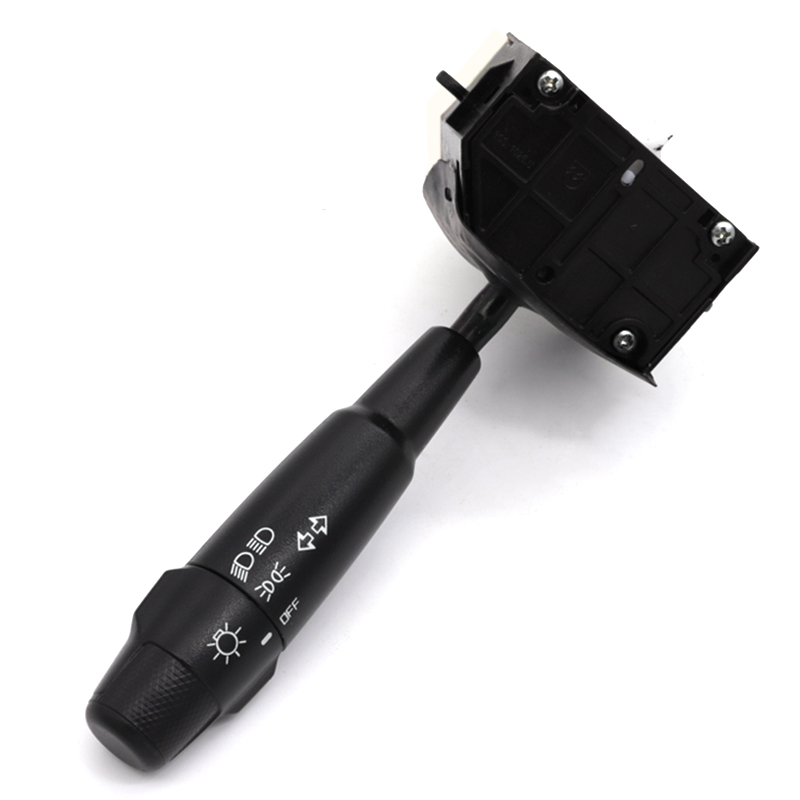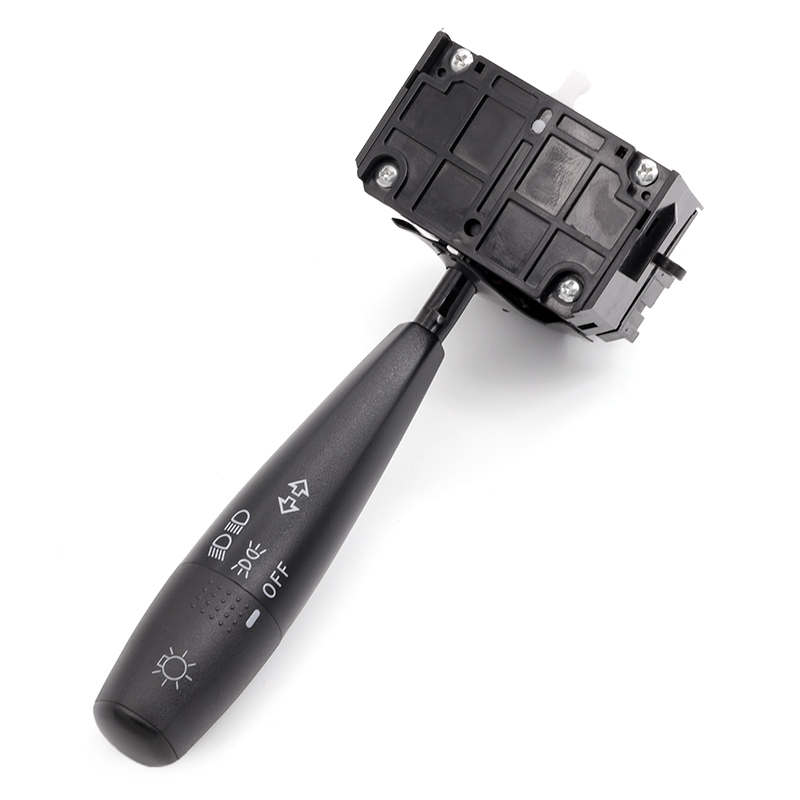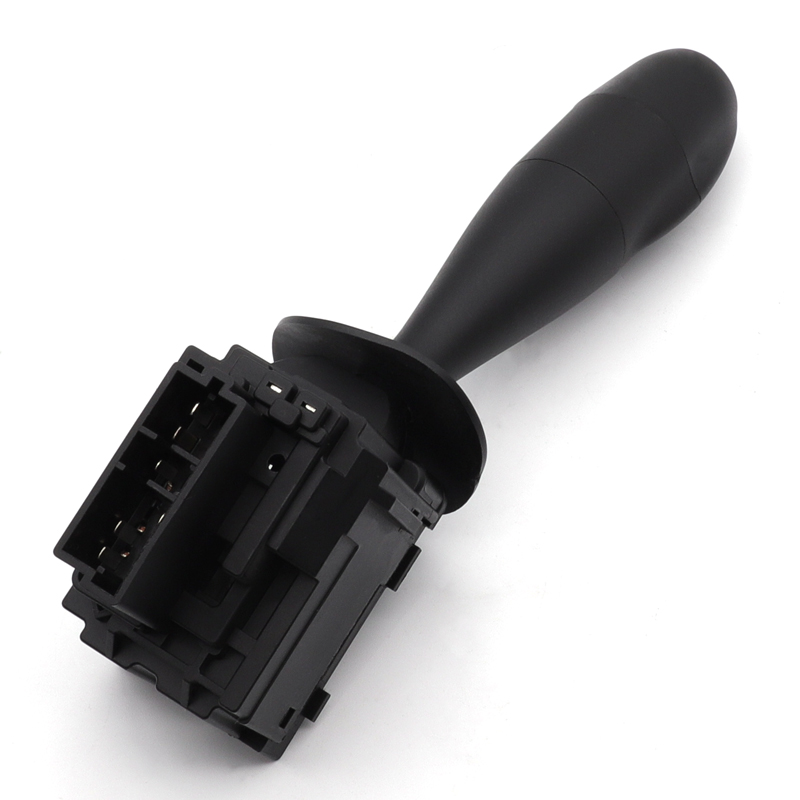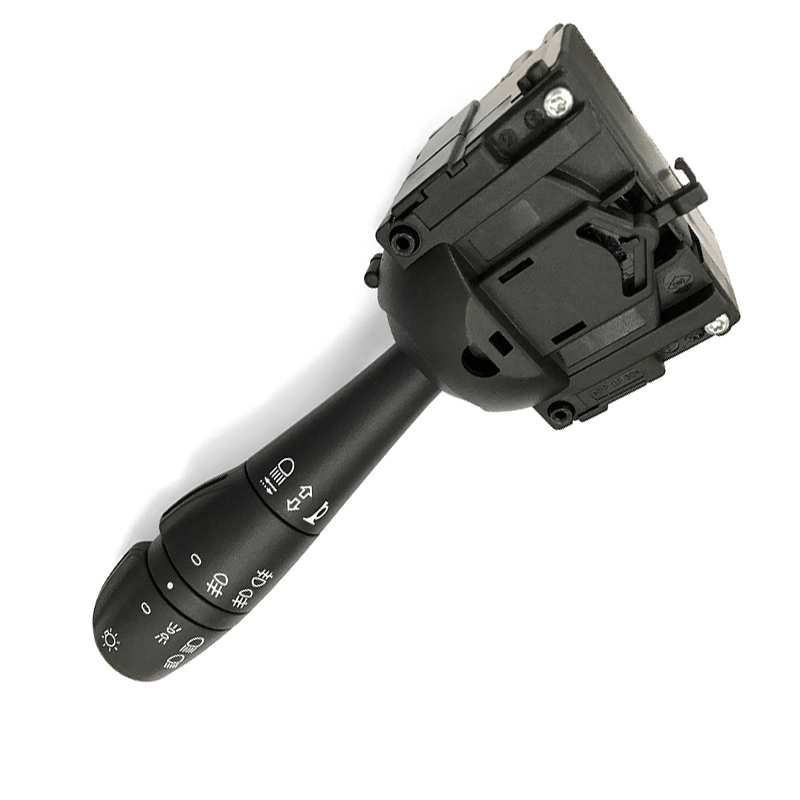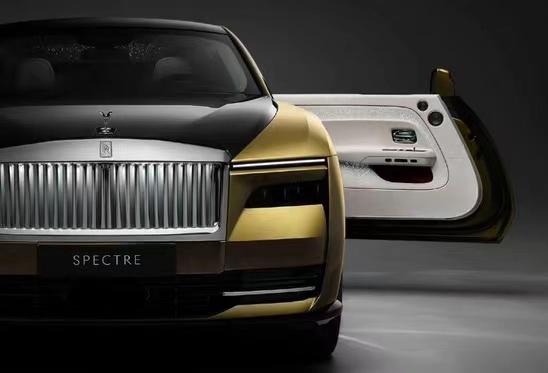Power Window Switch: The Ultimate Guide
Navigating the road with a car that has power windows is like sailing through the sea with wind in your sails. Just as the wind propels a ship, the power window switch allows for seamless control of all four windows in a car.
Without it, rolling them up and down would be a laborious task that could take away from the enjoyment of driving.
In this ultimate guide, we will delve into the evolution of power window switches and explore their design and functionality. We will also look at different types of switches available on the market today and identify common issues that may arise with them.
Additionally, we'll provide tips on how to maintain your switch's lifespan and discuss why upgrading your car's power windows can have many benefits. So sit back, relax, and let us take you on a journey through all things related to power window switches.
2: Evolution of Power Window Switches
3: Understanding Power Window Switch Design and Functionality
4: Diverse Types of Power Window Switches
5: Identifying Issues with Power Window Switches
6: Handling Repairs and Replacements for Power Window Switches
7: Lifespan Enhancement: Maintenance Tips for Your Power Window Switches
Introduction
This discussion will explore the topic of power window switches in modern day vehicles.
Firstly, an explanation of what a power window switch is and how it functions will be provided.
Secondly, the importance of power window switches in contemporary automobiles will be discussed, as they are now considered to be standard features and offer convenience and safety benefits to drivers and passengers alike.
Overall, this guide aims to provide a comprehensive overview of power window switches and their role in modern-day vehicle design.
Explanation of power window switches
Power window switches are electrical components installed in vehicles to control the movement of windows. These switches offer an easy and convenient way for drivers and passengers to adjust their windows without having to manually roll them up or down.
The power window switch is connected to an electric motor that drives the window regulator, which raises or lowers the window according to the user's command. Understanding how a power window switch works can help vehicle owners troubleshoot any issues that may arise with their windows.
Here are a few key points about power window switches:
- Power window switches require electricity from the car's battery to function properly.
- A blown fuse can cause problems with power windows, as it will interrupt the flow of electricity required for proper operation.
- The window regulator is responsible for moving the glass panel up and down, but it relies on the electric motor and power switch for activation.
By knowing these basic facts about power window switches, drivers can better understand how their vehicle's windows work and take steps toward repairing any issues they encounter.
Importance of power window switches in modern day vehicles
The convenience and comfort offered by power window switches have become an integral part of modern day vehicles, providing drivers and passengers with a seamless mechanism to adjust windows with just the touch of a button.
This device has revolutionized the way people control their car windows, making it easier for them to enjoy the fresh air or shield themselves from external elements without having to physically roll down or up their windows.
Power window switches offer several benefits such as ease of use, increased safety, and improved aesthetics.
By eliminating the need for manual operation, they allow drivers to focus on driving while adjusting their windows.
They also provide added security features such as automatic locking mechanisms that prevent unauthorized access from outside the vehicle.
In addition, these devices enhance the appearance of modern day vehicles by offering sleek designs that blend in seamlessly with other interior components.
Overall, power window switches are an essential component in modern day vehicles that add both convenience and safety to every ride.

Evolution of Power Window Switches
The evolution of power window switches traces back to the transition from manual windows to power windows.
The initial designs and limitations of early power window switches paved the way for technological improvements leading to current power window systems.
This subtopic discusses these key points in an objective and impersonal academic style, without personal pronouns.
Transition from manual windows to power windows
As cars have evolved over time, one notable transition has been the shift from manual windows to the convenience and luxury of power windows. Before the introduction of power window switches, drivers had to manually crank a handle to roll down or up their car windows. This was not only inconvenient but also physically demanding, especially for taller individuals who had to stretch their arms all the way down to reach the handle.
However, with the introduction of power windows in the early 1940s by Packard Motor Car Company, this changed.
Power windows are operated using a button or switch located on either side of the driver's seat or at each passenger seat. When pressed, electric motors connected to a window regulator move the glass up or down smoothly and quietly. This technology not only made it easier for drivers and passengers to operate their car windows but also increased safety by eliminating distractions caused by reaching across seats while driving.
The transition from manual windows to power windows marked a major milestone in automotive engineering and has continued to evolve with new features such as automatic one-touch operation and anti-pinch sensors that detect obstacles in its path.
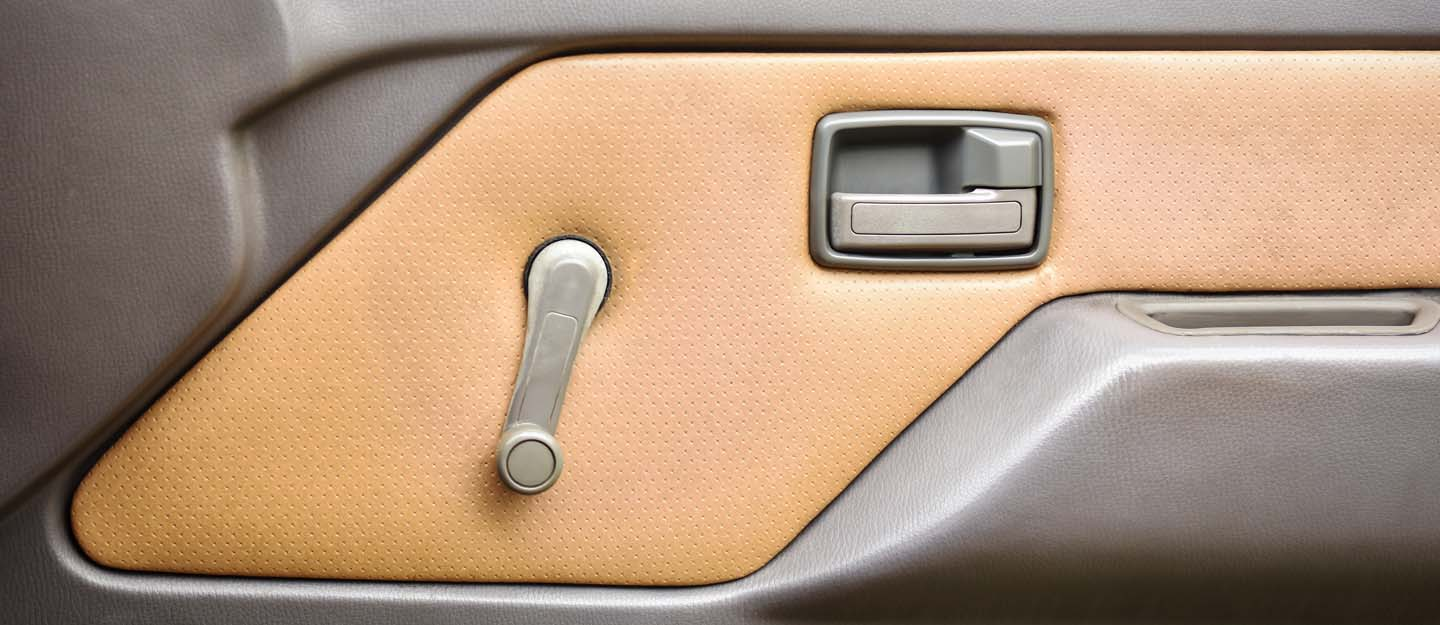
Initial designs and limitations of early power window switches
The early designs of power window switches were limited in their functionality and efficiency, which presented challenges for both drivers and manufacturers. The earliest power window switches were simple on/off switches that controlled the flow of electricity to the window motor. This design was prone to issues such as slow operation, overheating, and even complete failure due to the high current required to move the windows up and down.
As electric windows became more popular, power window switch manufacturers began developing more advanced designs that incorporated features such as variable speed control and automatic reversing mechanisms. These improvements allowed for smoother operation, improved safety, and increased reliability.
Today, power window switch factories employ cutting-edge technology to produce highly optimized components that meet strict quality control standards set by power window switch suppliers. As a result, modern electric windows are faster, quieter and more reliable than ever before.
Technological improvements leading to current power window systems
With the integration of advanced technology and improved manufacturing processes, contemporary electric windows have become an epitome of convenience and efficiency. Power window systems are now designed to be user-friendly with a range of features such as express up and down, one-touch auto-up/down, and anti-pinch protection.
In addition to these features, power window switch china manufacturer has made tremendous strides in developing efficient power window circuits that can withstand harsh weather conditions. The use of high-quality components during production has also led to increased durability and reduced maintenance costs for consumers. As a result, power window switch china factory is now a leading supplier of power window systems globally.
Overall, the evolution of power windows has been remarkable and demonstrates how technological advancements can enhance daily life experiences for people around the world.
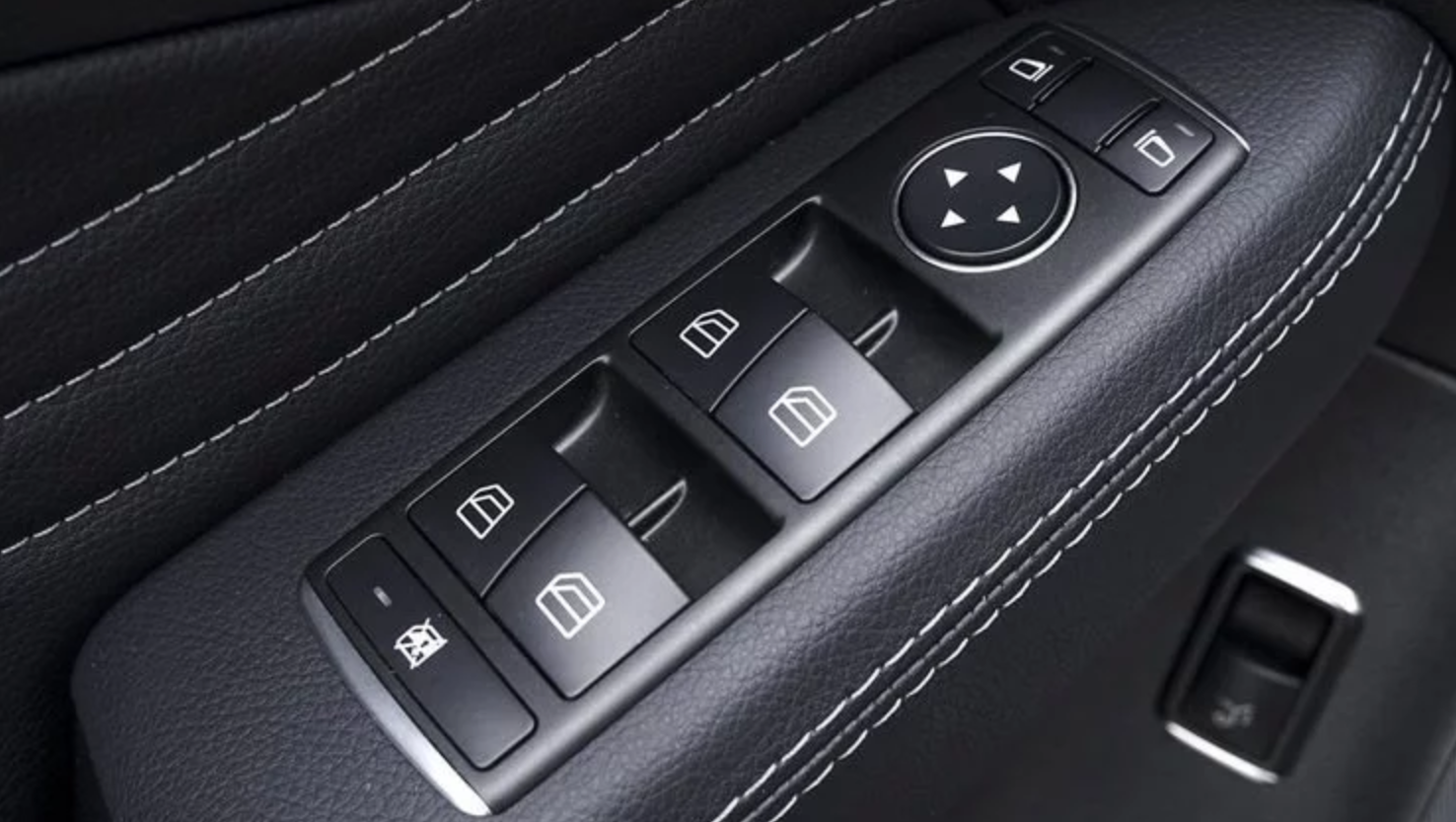
Understanding Power Window Switch Design and Functionality
This section delves into the design and functionality of power window switches, focusing on two key aspects:
- The components of a power window system
- The electrical circuitry that underlies its operation
The discussion seeks to provide readers with a comprehensive understanding of how these systems work, from their basic mechanical components to the complex wiring that enables them to function seamlessly.
By examining these topics in detail, readers will gain insight into how power window switches are able to provide convenient and efficient access to vehicle windows.
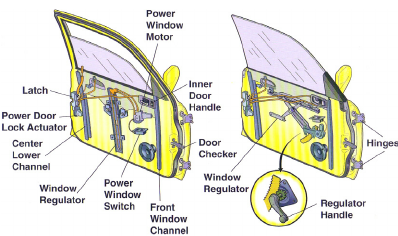
Components of a Power Window System
This discussion will focus on the key components of a power window system, namely the switch, motor, and regulator. These essential parts work together to enable smooth and efficient operation of power windows in vehicles.
In order to gain a comprehensive understanding of how these components function within the larger system, we will explore the detailed function of each individual component.
Essential parts: switch, motor, regulator
The power window system comprises three essential parts - the switch, motor and regulator - that work together to enable smooth and effortless movement of the vehicle's windows, evoking a sense of convenience and comfort for the passengers.
The power window switch is responsible for initiating the operation of the system by sending electrical signals to the motor.
The motor, on receiving these signals, converts electrical energy into mechanical energy which drives the regulator.
The regulator guides the up-and-down motion of the glass in its tracks, allowing it to move effortlessly within its designated space.
However, when any one of these three components fails due to an electrical issue or mechanical issue, it can result in a malfunctioning power window system.
Therefore, proper maintenance and timely repair are crucial to ensure optimal performance and avoid inconvenience during usage.
Detailed function of each component
Each component of the power window system plays a crucial role in ensuring smooth and effortless movement of the vehicle's windows, akin to a symphony where the switch acts as the conductor, the motor as the musician, and the regulator as the sheet music.
The power window switch is responsible for sending an electrical signal to activate or deactivate the motor which moves the window glass up or down along its track. This switch is typically powered by battery electric and has multiple functions such as controlling all four windows at once or locking individual windows for child safety.
The motor converts electrical energy into mechanical energy to move the window glass up or down within its track while maintaining proper alignment with it.
Finally, the regulator ensures that this movement is controlled and regulated so that there is no damage caused to any part of the system.
Together, these components work seamlessly to provide a hassle-free experience for drivers who desire quick and efficient access to fresh air without having to constantly open and close their car windows manually.
Electrical Circuitry and Operation Principles
The electrical circuitry and operation principles of a power window system involve different components, including relays, motors, and wiring. These elements play a crucial role in the system's functionality, allowing the switch to activate the windows' movement.
Understanding the process sequence when activating the switch is essential for diagnosing and repairing issues related to power windows.
Role and functionality of relays, motors, wiring in a power window system
Relays, motors, and wiring are crucial components that work together to ensure the smooth operation of a power window system, making it a reliable and convenient feature in modern cars.
The power window switch sends an electrical signal to the relay, which then sends power to the motor. The motor converts this electrical energy into mechanical energy that moves the window up or down.
Wiring connects all these components and ensures they operate efficiently. Without relays, motors, or wiring, a power window system would not function at all or may experience intermittent problems.
Thus, understanding how these components work together is essential for diagnosing any issues with a car's power window system and maintaining its proper functioning over time.
Process sequence when activating the switch
Activating the switch in a power window system initiates a process sequence that involves the conversion of electrical energy into mechanical energy, resulting in the movement of the window. This process is made possible by the interaction of various components such as relays, motors, and wiring. When the power window switch is activated, an electrical connection is established that sends a signal to the relay. The relay then acts as a switch, connecting power from the battery to the motor. The motor converts this electrical energy into mechanical energy and rotates, which in turn moves the regulator mechanism that controls the up and down motion of the window pane. This entire process happens seamlessly and within seconds making it easy for individuals to operate their vehicle's windows with minimal effort. To help understand this process better, refer to the table below which highlights each step involved in activating a power window switch and its subsequent effect on window operation.
| Step | Description | Effect |
|---|---|---|
| 1 | Power Window Switch Activated | Establishes an Electrical Connection |
| 2 | Relay Triggered | Acts as Switch Connecting Power from Battery to Motor |
| 3 | Motor Converts Electrical Energy into Mechanical Energy | Rotates |
| 4 | Regulator Mechanism Moves | Controls Up and Down Motion of Window Pane |
| 5 | Window Moves | Resulting Effect of Process Sequence |
Understanding this sequence can be empowering for car owners who want control over even simple tasks like rolling down their windows while driving or parking their vehicles. By knowing how these systems work together to produce results, individuals can make informed decisions about maintenance needs or repairs if necessary.
Diverse Types of Power Window Switches
This section delves into the diverse types of power window switches available in the market. The discussion focuses on three key points:
- single-button, dual-button, and master switches for driver's side control panel
- specialized variants designed for different vehicle models
- rocker, toggle, and push-button switches
Through this analysis, readers can gain a better understanding of the range of options when it comes to power window switch design and functionality. The objective style of writing used in this section aims to provide an informative overview without personal bias or subjective opinions.
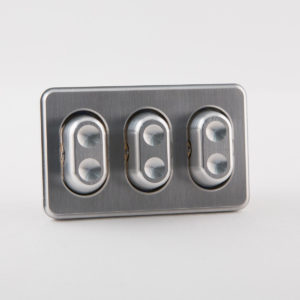
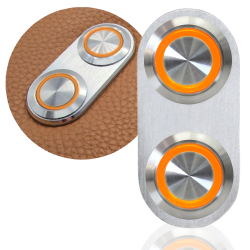
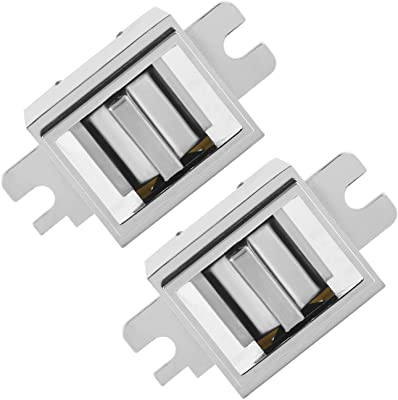
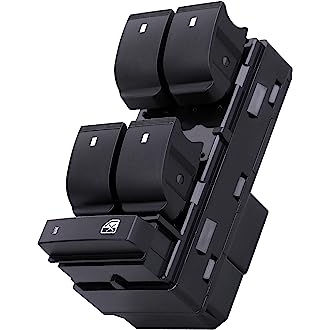
Single-button, Dual-button, Master switches (driver's side control panel)
Single-button, dual-button, and master switches are all types of power window switches commonly found on the driver's side control panel.
Single-button switches are the most basic type of power window switch, allowing the user to control one window at a time.
Dual-button switches, on the other hand, can control two windows at once. They usually have two buttons that correspond to each window, making it easy for drivers to roll up or down both windows simultaneously.
Master switches are typically found on the driver's side control panel and allow drivers to operate all windows in a vehicle from their seat. They often have a lockout feature that prevents passengers from accidentally activating them while still allowing the driver to use them.
Additionally, some master switches may also have an auto-down feature which allows users to lower all windows with just one press of a button. These types of power window switches offer convenience and ease-of-use for drivers looking for efficient ways to control multiple windows within their car.
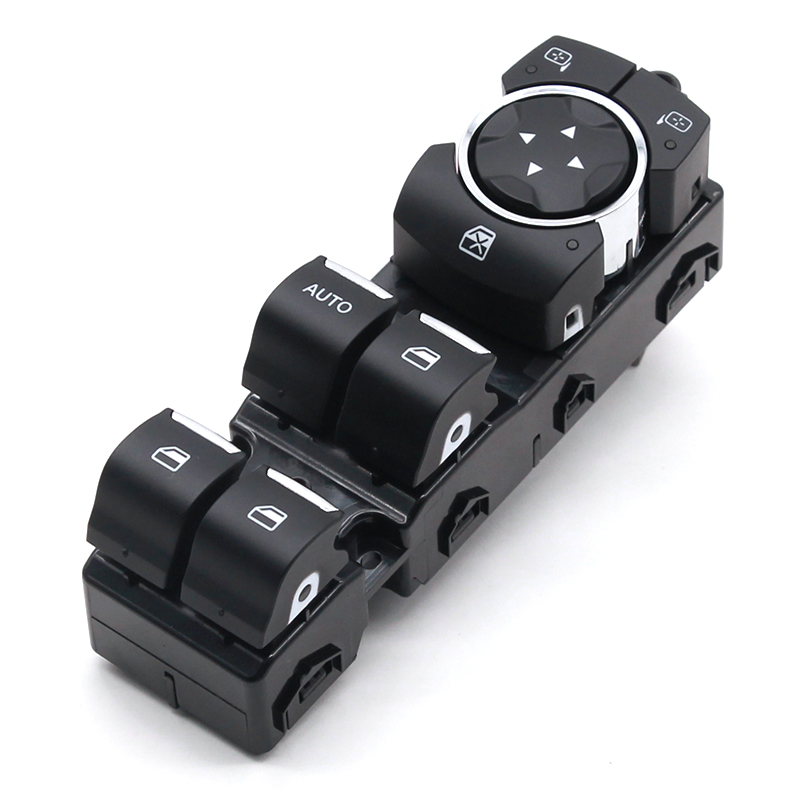
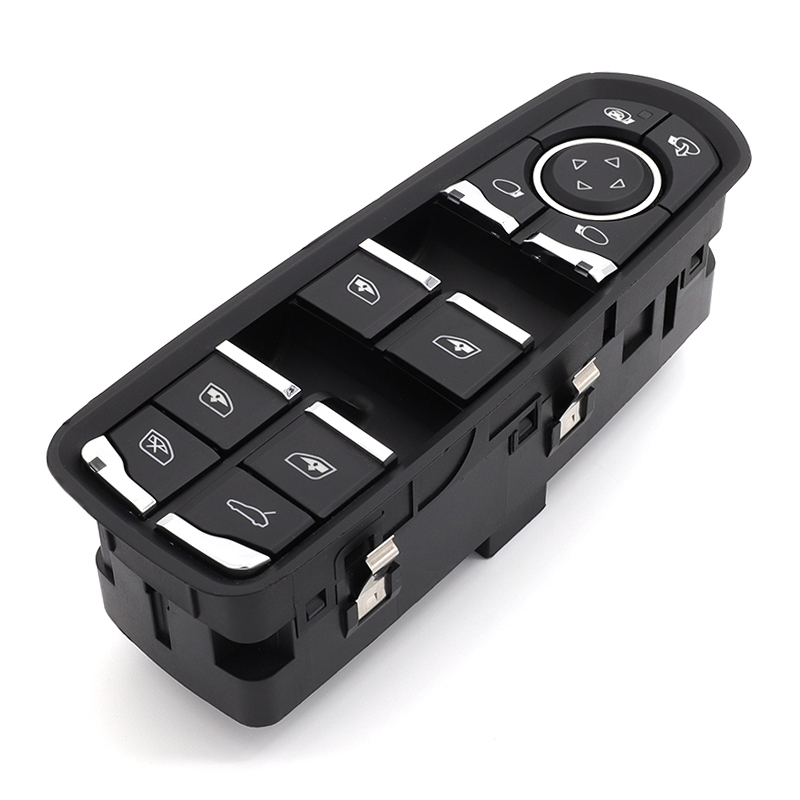
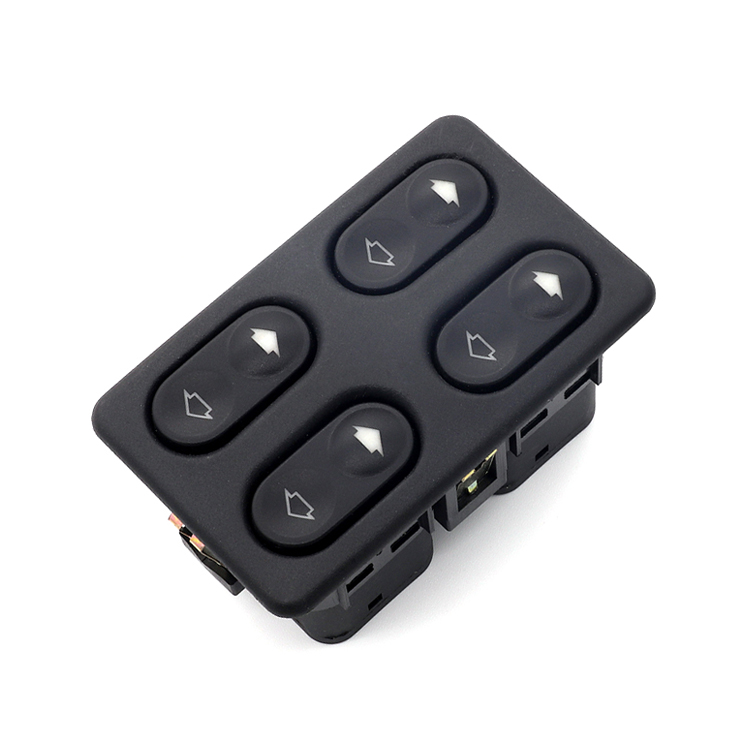
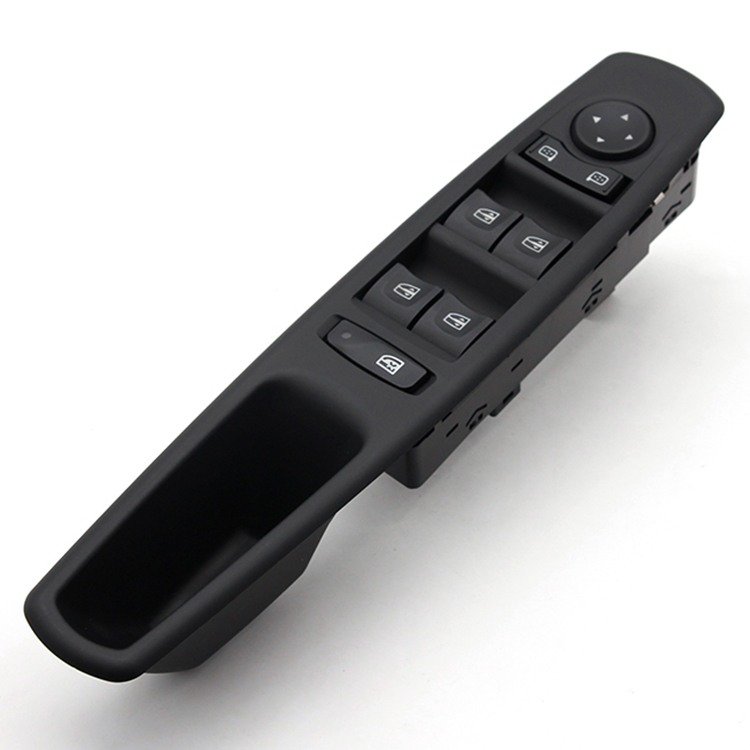
Specialized variants for different vehicle models
Specialized variants for specific vehicle models showcase significant diversity in their design and functionality, catering to the unique needs of drivers. Manufacturers recognize that different car models have varying specifications and requirements when it comes to power window switches. Thus, they produce customized switches that match the regulator assembly of each model.
For example, some vehicles require a switch with multiple buttons while others need a single button switch. Some also need a specific size and shape that fits the door panel perfectly. Therefore, manufacturers create specialized variants such as rocker switches or toggle switches to meet these specific needs.
These switches may also be equipped with additional features like child safety locks or automatic controls for opening and closing windows. Ultimately, specialized power window switches provide drivers with optimal control over their car's windows while ensuring safety and convenience on the road.
Rocker switches, Toggle switches, Push-button switches
Specialized variants of power window switches are designed to fit different vehicle models, ensuring an exact match for the specific needs of each car. These variants come in different forms and shapes, with varying functionality and features. In this section, we will be discussing three types of power window switches: rocker switches, toggle switches, and push-button switches.
Rocker switches are perhaps the most common type of power window switch found in modern vehicles. They consist of a rectangular button that rocks up and down when pressed to open or close the windows.
Toggle switches are similar to rocker switches but have a lever that moves back and forth instead of rocking up and down. Push-button switches require a simple press on the button to activate them.
Each type offers its unique benefits depending on personal preference or vehicle make/model requirements. If you're looking for a suitable replacement for your damaged power window switch or upgrading from manual windows to electric ones, then understanding these three types would help narrow down your search options.
Here is a list of four things you need to know when considering these specialized variants:
- Rocker switches provide excellent tactile feedback as they rock up and down.
- Toggle switches offer better precision control compared to other types.
- Push-button switches have straightforward operation since all that's needed is just one push.
- It's important always to check if the switch you're buying is compatible with your car's window regulator system before making any purchase decision.
Identifying Issues with Power Window Switches
In this section, we will discuss the identification of issues with power window switches.
This includes a discussion on common problems that arise in power window systems and the diagnostic techniques used to identify these issues.
Understanding these key points is crucial for anyone who wants to maintain their vehicle's power windows in optimal condition and avoid costly repairs.
Common Problems with Power Window Systems
This section focuses on the common problems encountered with power window systems, specifically the power window switch. The main issues involve dirty or corroded contacts, faulty wiring or circuits, broken switch mechanism, and malfunctioning motor or regulator.
These problems can be identified by various symptoms such as slow movement or complete failure of the window to move at all. Understanding these typical issues and their corresponding indicators is essential in maintaining a properly functioning power window system.
Typical issues: Dirty or corroded contacts, Faulty wiring or circuits, Broken switch mechanism, Malfunctioning motor or regulator
One of the common issues that can occur with power window switches is dirty or corroded contacts, faulty wiring or circuits, broken switch mechanism, or malfunctioning motor or regulator. These typical issues can cause significant problems for drivers and passengers who depend on their power windows to function properly.
Dirty or corroded contacts can lead to poor electrical connections, resulting in intermittent operation or complete failure of the power window system. Faulty wiring can cause shorts and other electrical problems that prevent the switch from functioning correctly.
Broken switch mechanisms may not allow proper engagement of the motor when activated, leaving windows stuck in either an open or closed position. Finally, a malfunctioning motor or regulator may result in windows that move slowly, erratically, get stuck halfway up/down, or fail to operate at all.
Addressing these typical issues requires careful diagnosis by a professional mechanic who has experience working with power window switches and associated components.
Symptoms indicating these problems
Symptoms indicating typical issues with power window switches, such as dirty or corroded contacts, faulty wiring or circuits, broken switch mechanism, and malfunctioning motor or regulator can include:
- Intermittent operation
- Complete failure of the power window system
- Windows stuck in either an open or closed position
- Slow and erratic movement of windows
- Getting stuck halfway up/down or failing to operate at all.
Identifying these symptoms early on can help prevent further damage to the power window switch and potentially save money on replacements. In some cases, a simple cleaning of the contacts may be enough to fix the issue while other times a faulty motor or bad window switch may need to be replaced.
It is important to address any symptoms as soon as they arise since a malfunctioning power window switch can not only be inconvenient but also pose safety risks for drivers and passengers. Additionally, understanding common symptoms associated with a faulty power window switch can aid in troubleshooting potential problems and determining whether it is best to attempt DIY repairs or seek professional assistance from a mechanic experienced in repairing issues related to the power window regulator.
Diagnostic Techniques for Power Window System Issues
Diagnostic techniques are crucial in identifying and resolving power window system issues. To diagnose problems effectively, certain tools must be used, such as a multimeter.
These tools play a fundamental role in diagnosing common power window system issues by following specific steps that help to identify the root cause of the problem.
Tools required for diagnosis (e.g., multimeter)
To effectively diagnose issues with a power window switch, it is essential to have the appropriate tools at hand, such as a multimeter. This device allows the technician to measure various electrical parameters, including voltage, current and resistance. In addition to the multimeter, other essential tools for diagnosing power window switch issues include a test light, wiring diagram or schematic, continuity tester and a battery or power source. These tools enable accurate testing of the electrical components in the system and aid in identifying any faults that may be present. Electrical current is crucial in determining whether there is an open circuit or short circuit within the system, which could result in non-operation of the power window switch. Therefore, investing in these diagnostic tools is necessary for anyone who wants to save time and money by avoiding unnecessary repairs and replacements of their power window switches.
Steps for diagnosing common issues
One effective method for identifying common issues with power window switches is to approach the diagnosis like a detective investigating a crime scene, carefully examining all possible clues and evidence.
The mechanic should start by testing the switch itself with a multimeter to ensure it is functioning properly.
If the switch checks out, then attention should be turned towards the wiring and connections.
Loose or damaged wires can cause power interruptions that prevent the window from operating correctly.
Another potential issue could be a faulty motor or regulator, which would require replacement if identified as the root cause of the problem.
By following a thorough process of elimination when diagnosing power window switch problems, mechanics can quickly identify and correct any issues that may arise in this critical component of any vehicle's electrical system.
Handling Repairs and Replacements for Power Window Switches
This section will discuss the proper handling of repairs and replacements for power window switches. Specifically, it will cover two key points:
- Fixing common problems
- Replacing faulty parts
Fixing common issues can range from simple adjustments to more complex electrical repairs, while replacing faulty parts may involve ordering specific replacement components or seeking professional assistance. By understanding these two processes, individuals can effectively maintain their power window switches and ensure optimal functionality over time.
Fixing Common Problems
This section will discuss common problems with power window switches and offer solutions for fixing them. Two key points to be covered include cleaning dirty or corroded contacts and repairing broken components or connections.
The first step in resolving issues with power window switches is often to clean the electrical contacts, which can become dirty or corroded over time and impede proper functioning.
If this does not solve the problem, further repair methods may need to be employed to fix broken components or connections within the switch.
Cleaning process for dirty/corroded contacts
To restore the functionality of a power window switch that has dirty or corroded contacts, a thorough cleaning process is necessary. This is an essential part of an automotive maintenance schedule to ensure optimal performance and prevent potential hazards.
The cleaning process involves removing the switch from the door panel, disassembling it carefully, and using an appropriate cleaner to remove dirt and debris from the contacts. A soft brush or toothbrush can be used to gently scrub off any remaining grime.
After cleaning, the contacts should be dried thoroughly before reassembling the switch. Regular maintenance schedule for power window switches can help prolong their lifespan and prevent costly repairs in the future.
It's important to note that some switches may require replacement if they are severely corroded beyond repair or damaged due to wear and tear over time. Proper care and attention can go a long way in ensuring safe driving conditions for everyone on the road.
Repair methods for broken components/connections
Repairing broken components or connections in a power window system involves identifying the damaged parts, sourcing suitable replacements, and following manufacturer guidelines for installation and testing.
Before beginning any repair work on a power window switch, it is important to ensure that basic tools such as screwdrivers, pliers, wire strippers and electrical tape are readily available.
To begin with the repair process, one needs to remove the door panel to access the switch assembly. Once this is done, it is essential to visually inspect all components for any visible signs of damage or wear.
Broken wires or connectors can be repaired by soldering them back together or using crimp connectors. If a component such as a motor has failed completely, it will need to be replaced entirely.
It is advisable to source genuine replacement parts from authorized dealerships or reliable online vendors who specialize in selling quality aftermarket parts that meet OEM specifications.
After replacing all faulty components, it is important to reinstall the door panel securely and test the power window switch thoroughly before closing up everything.
Replacing Faulty Parts
In order to replace faulty parts in a power window switch, certain tools and materials are required. These may include screwdrivers, pliers, a multimeter, replacement switches or motors, and wiring connectors.
To successfully carry out the replacement procedure, it is important to follow a step-by-step guide on removal and installation procedures for the specific make and model of the vehicle.
Required tools and materials
Essential tools and materials are necessary for the installation of a power window switch. These include a set of screwdrivers, particularly a Phillips head and flat head, as well as trim tools that can be used to remove panels without causing damage.
Other required materials include screws and connectors that must fit the particular make and model of the car being worked on. It is important to ensure that all parts fit correctly before proceeding with installation in order to avoid damaging the power window switch or other components.
By taking care during the installation process and using proper tools, it is possible to replace faulty parts with ease and restore full functionality to your vehicle's power windows.
Step-by-step guide on removal and installation procedure
To successfully remove and install a new power window switch, following a step-by-step guide is an effective way to ensure proper installation without causing damage to the car's electrical system.
To begin, gather all the required tools and materials as listed in the previous section.
Then, disconnect the negative battery terminal to avoid any electrical hazards.
Next, remove the door panel carefully using trim removal tools and unscrew any screws holding the power window switch in place.
Gently pull out the old switch from its connector and replace it with a new one by plugging it into its designated spot on the connector board.
Finally, screw back any necessary screws, reattach the door panel, reconnect the negative battery terminal, and test if the new switch works properly by operating your car's windows up and down.
Following this simple yet comprehensive guide can save you costly labor charges at repair shops while also giving you the satisfaction of doing it yourself.
Lifespan Enhancement: Maintenance Tips for Your Power Window Switches
This section focuses on enhancing the lifespan of power window switches through proper maintenance. The discussion covers routine cleaning tips, measures to prevent excessive wear and tear, and benefits of periodic checks for loose connections.
By following these guidelines, car owners can ensure that their power window switches remain functional for an extended period, reducing the need for frequent repairs or replacements.
Routine cleaning tips
Regular cleaning maintenance is a recommended practice to ensure the optimal functionality and longevity of power window switches. Accumulated dirt, dust, and grime can cause friction that hinders the switch's movement along the window channels. Routine cleaning helps prevent this build-up, keeping the power window switch in top shape for longer periods.
To begin the cleaning process, it is essential to disconnect the negative battery cable first. This step ensures that there are no electrical hazards while working on your vehicle's power window switch system.
Afterward, use a soft-bristled brush to remove any visible debris or dust particles from around the switches and buttons' edges. Next, use a microfiber cloth dampened with water or an electronic cleaner solution to wipe down all surfaces thoroughly.
Finally, reattach any disconnected wiring harnesses before reconnecting your negative battery cable securely. Incorporating these simple steps into your routine maintenance schedule will significantly enhance your power window switch lifespan and prevent you from costly repairs such as replacing a damaged power window motor or a faulty regulator repair kit.
Measures to prevent excessive wear & tear
Implementing preventive measures can significantly reduce the risk of excessive wear and tear on the components of the power window switch system, thus extending its lifespan.
One effective way to prevent excessive wear and tear is to lubricate all moving parts of the power window switch, including hinges, gears, and motors. Regular lubrication can minimize friction between these components, reducing their chances of wearing down over time.
Another measure that can help prevent excessive wear and tear is regular cleaning and inspection. It's important to keep the power window switch free from dirt, debris, and moisture. These elements can cause corrosion or rust on critical parts of the system which may lead to expensive repair costs or total replacement in severe cases.
By keeping it clean and dry at all times, you'll be able to avoid these issues altogether while prolonging its service life.
Preventive maintenance not only helps save on maintenance costs but also ensures that your car's power window switches remain functional for longer periods without any glitches whatsoever.
Benefits of periodic checks for loose connections
Periodic checks for loose connections in the power window switch system are crucial to ensure the smooth functioning of the entire mechanism. Loose connections can cause erratic behavior, such as intermittent power supply or complete failure of the system. Like checking the foundation of a building, periodic checks help keep the structure stable and functional.
Here are some benefits of conducting regular checks for loose connections in your power window switch:
- It ensures that all electrical connections are secure and tight, preventing any accidental disconnections that may occur due to vibrations or wear and tear.
- Regular checks can help identify any potential issues before they become major problems, saving you time and money on repairs down the line.
- Checking for loose connections can also help diagnose other related issues with your car's electrical system, such as a faulty control module or battery voltage signal.
- Periodic maintenance helps ensure that your power window switch operates smoothly, giving you peace of mind while driving.
Benefits Of Upgrading Your Car's Power Windows
Upgrading your car's power windows can have several benefits, including enhancing your driving experience and improving safety through automatic windows. By upgrading to a more advanced power window system, you can enjoy the convenience of one-touch opening and closing of all windows simultaneously.
Additionally, automatic windows can provide a safer and more secure environment by preventing unauthorized entry into the vehicle.
How it can augment your driving experience
Enhancing your driving experience is possible with the addition of a power window switch. With this mechanism installed, drivers can effortlessly control the windows without having to physically reach and manually adjust them. This technology adds an extra layer of convenience that can make driving more enjoyable.
Here are some ways in which a power window switch can augment your driving experience:
- Convenience: A power window switch eliminates the need for manual adjustments, which makes it easier for drivers to focus on the road.
- Comfort: Power windows provide a smoother ride by reducing noise pollution from outside.
- Safety: Power windows allow for quick opening and closing if there is an emergency situation, such as needing fresh air or escaping from the car.
- Efficiency: The use of a power window switch reduces wear and tear on the window regulator, which helps prolong its lifespan and save money over time.
Installing a power window switch in your motor vehicle can enhance your driving experience in many ways. Not only does it add convenience and comfort, but it also promotes safety and efficiency while reducing wear and tear on essential components of your car's windows system. Consider upgrading to this useful technology today!
Safety enhancements through automatic windows
Ironically, automatic windows can provide a false sense of security for passengers in a car, as they may assume that the windows will always function properly in emergency situations. However, power window failure is not uncommon and can pose serious risks to the safety of passengers.
In fact, according to a study conducted by the National Highway Traffic Safety Administration (NHTSA), an estimated 50 children are injured each year due to power windows.
To address this issue, manufacturers have implemented safety enhancements in automatic windows such as auto-reverse and jam protection features.
Auto-reverse allows the window to automatically reverse its direction when it encounters an obstruction while closing, preventing possible injuries or even death caused by entrapment. Jam protection feature stops the window from closing if it detects any resistance during operation.
These features ensure safe operation of automatic windows and prevent accidents caused by power window failures. Therefore, it is crucial for car owners to regularly check and maintain their power window switch and window regulators to ensure proper functioning of their vehicle's automatic windows and maximize passenger safety on the road.
Conclusion
In conclusion, this article highlighted the benefits of upgrading to power windows in Section 8.
As a recapitulation, it emphasized how power windows add convenience and safety to driving.
However, it is crucial to note that proper maintenance and replacement of the power window switch are necessary for optimal performance.
Neglecting such upkeep may result in electrical failures or even accidents.
Recapitulating key points
To summarize the main points discussed thus far, it is important to review the key aspects of power window switches and their operation.
Firstly, a power window switch is an electronic device that controls the movement of a vehicle's windows. The switch is usually located on the door panel and can be used to raise or lower the window as desired.
Secondly, when a power window switch fails to function properly, it is often caused by a faulty window regulator or battery issues. In such cases, it may be necessary to consult with a mobile mechanic for repairs.
To keep the audience interested in this recapitulation section of our guide on power window switches, here are four important items worth mentioning:
- Power window switches are essential components for modern vehicles.
- Proper maintenance of these switches can prevent costly repairs down the line.
- Window regulators play an integral role in ensuring smooth operation of power windows.
- Mobile mechanics provide convenient solutions for repairing faulty power window switches.
By keeping these key points in mind, vehicle owners can ensure that their power windows remain functional and reliable for years to come.
Underlining the necessity to properly maintain/replace power window switches
Proper maintenance and timely replacement of the power window switch is crucial for ensuring its smooth operation. This electronic device is responsible for controlling the movement of a vehicle's windows, and any issues with it can cause inconvenience to the driver and passengers.
Neglecting to maintain or replace a faulty power window switch can result in weak power windows that fail to function when needed. A weak power window can be frustrating, especially during extreme weather conditions.
Regular maintenance, such as cleaning the switches, lubricating them with silicone spray, and inspecting for any signs of wear and tear, can help prevent these problems. Additionally, replacing a worn-out or damaged switch immediately is essential to ensure safety on the road.
It is recommended to have a mechanic inspect your vehicle if you suspect there are issues with your power window switch so that they can be addressed promptly. By properly maintaining or replacing your power window switch when necessary, you can avoid costly repairs in the future while enjoying uninterrupted access to fresh air and natural light inside your car.
FAQs: Frequently Asked Questions
In this section, we will address some frequently asked questions about power window switches.
Firstly, we will discuss how to identify if your power window switch is malfunctioning.
Secondly, we will explore the symptoms that may indicate a faulty power window switch.
Thirdly, we will provide guidance on how to clean dirty or corroded power window switch contacts.
Additionally, we will consider whether it is possible to repair a faulty power window switch or if replacement is necessary.
Finally, we will suggest some preventive measures that can help maintain the good health of your car's power windows in the long term.
How do I identify if my power window switch is malfunctioning?
Identifying a malfunctioning power window switch is like trying to solve a puzzle with missing pieces - it requires careful observation and analysis of the symptoms. The most common sign of a faulty power window switch is when the window fails to move up or down upon pressing the button. However, this symptom can also be caused by other issues such as a broken regulator or damaged wiring, so it's important to look for additional signs.
To help you identify if your power window switch is malfunctioning, here are three common symptoms to look out for:
- The window moves slowly or only operates intermittently;
- There's an unusual noise coming from the door panel when attempting to operate the window;
- The switch feels loose or unresponsive when pressed.
If you're experiencing any of these symptoms, it's important to have your power window switch diagnosed by a professional. Depending on the severity of the issue, repair may be possible. In some cases, however, replacement may be necessary to restore functionality and ensure safety while operating your vehicle.
What are some symptoms pointing towards a bad power window switch?
One way to determine if the power window switch is malfunctioning is by observing if the affected window moves slowly or intermittently. This can indicate a problem with the electrical connection between the switch and the window regulator motor, which controls the movement of the window.
Another symptom of a bad power window switch is when it fails to operate at all, meaning that none of the windows in your car respond when you try to open or close them.
If you notice any of these symptoms, it's important to have your power window switch checked by a professional. Ignoring these issues could lead to further damage to your vehicle's electrical system and potentially costly repairs down the line.
A skilled mechanic will be able to diagnose and repair any problems with your power window switch, ensuring that you're able to enjoy smooth and reliable operation of all your windows once again.
How do I clean my dirty/corroded power window switch contacts?
To effectively clean dirty or corroded contacts on a power window switch, using a fine-grit sandpaper can help remove any buildup and restore proper electrical conductivity, ultimately improving the functionality of the switch.
It is important to first disconnect the power source and remove the switch from its housing before beginning the cleaning process. Once removed, inspect the contacts for any visible signs of dirt or corrosion.
Using a small piece of sandpaper wrapped around your finger, gently scrub away any buildup on the contacts until they appear shiny and smooth. Be careful not to use too much pressure as this may cause damage to delicate components within the switch.
After cleaning, reattach any disconnected wires and remount the switch back into its original position. Properly cleaned contacts should improve electrical conductivity and allow for smoother operation of your power windows.
Can I repair my own faulty power window switch or should it be replaced?
Repairing a faulty power window switch can be a cost-effective solution, but it is important to consider the severity of the issue and whether it requires professional assistance or replacement.
Firstly, if the issue with the power window switch is minor, such as a loose connection or dirty contacts, then repairing it may be simple enough to do on your own. However, if there are more complex issues such as broken internal components or damaged wiring, then attempting to repair it yourself may cause further damage to your vehicle's electrical system.
Secondly, replacing a faulty power window switch may be necessary in certain situations. If you have attempted to repair the switch and the issue persists, or if there has been significant physical damage to the switch itself, then replacing it may be the best course of action.
It is important to refer to your vehicle's manual for guidance on how to properly replace the power window switch. Additionally, seeking professional assistance from a mechanic or auto electrician may also be beneficial in ensuring that your power window switch is repaired or replaced correctly.
Understanding when and how to repair or replace a faulty power window switch can save you time and money in maintaining your vehicle's electrical system. This guide aims at providing an objective perspective for car owners who wish to take control of their car maintenance routine without compromising safety standards.
What preventive measures can ensure the good health of my car's power windows?
After determining whether a faulty power window switch needs to be repaired or replaced, it is important to consider what measures can be taken to ensure the good health of your car's power windows. Preventive measures are essential in avoiding issues with the power window switch, as well as the window regulator and motor. These measures can save you money on repairs and replacements in the long run.
One preventive measure is regularly cleaning the power window switch and surrounding area. Dirt and debris can accumulate around the switch, causing it to malfunction. Additionally, keeping the interior of your car dry can help prevent damage to the electrical components of your car's power windows. Regular maintenance checks by a professional mechanic are also recommended to catch any potential issues before they escalate into more expensive problems. By taking these steps, you can ensure that your car's power windows continue to function properly for years to come.
| Preventive Measure | Emotional Response |
|---|---|
| Regular cleaning | Cleanliness |
| Interior drying | Protection |
| Professional check | Peace of mind |
Incorporating preventive measures not only saves money but also ensures safety while driving on the road. The importance of maintaining functional windows cannot be emphasized enough as they provide visibility while driving and protect against outside elements such as wind, rain, and dust. Therefore, regular maintenance should be seen as an investment rather than an expense for every responsible car owner out there who desires liberation from unexpected expenses related to their vehicle's upkeep.
How does the electrical circuit function in a typical car's power windows?
Understanding the electrical circuit in a car's power windows is crucial for anyone seeking to comprehend how this system operates. The power window switch plays a vital role in the operation of the electrical circuit. This switch is responsible for controlling the flow of electricity from the car battery to the power window motor, which then moves the window up or down through a series of gears and pulleys.
The electrical circuit in a typical car's power windows consists of four basic components: the power window motor, window regulator, wiring harness, and control switch. The motor is connected to the window regulator via a gear mechanism that converts rotational energy into linear motion. The wiring harness connects all of these components together and provides a path for electricity to flow between them. Finally, the control switch allows an operator to activate or deactivate each individual window by completing or breaking an electrical circuit within it.
Understanding how these components work together is essential for diagnosing any issues with your vehicle's power windows and ensuring they function properly over time.
Are there specific types of power window switches designed particularly for diverse vehicles?
Interestingly, the type of power window switch required for a specific vehicle is determined by the model of the vehicle and its window regulator. There are various types of window regulators, including cable-driven, scissor-type, and gear-driven systems. Each type requires a specific power window switch to function correctly.
For instance, some vehicles may require a single power window switch that controls all windows in the car, whereas others might need individual switches that control each window separately. Additionally, newer vehicles often require advanced electronic switches designed to communicate with other on-board computer systems.
Therefore, it's crucial to ensure that you select the right power window switch for your diverse vehicle's make and model to guarantee that it functions correctly with your automotive power windows.
What tools will I require to diagnose or fix an issue in my car's power windows?
Now that we know the different types of power window switches available for diverse vehicles, let's move on to the tools required for diagnosing and fixing an issue in your car's power windows. Diagnosing and fixing a problem with the power window switch is not as complicated as it may seem. However, you will need some basic tools to get started.
The first tool you'll require is a multimeter. A multimeter is used to measure voltage, resistance, and current flow in electrical circuits. This tool can help you identify if there are any issues with your power windows' wiring system. Other essential tools include screwdrivers, pliers, wire strippers/cutters, electrical tape, and a flashlight. With these simple tools at hand and some basic knowledge of your car's electrical system, diagnosing and fixing an issue with your power window switch becomes easy.
| Tools | Description |
|---|---|
| Multimeter | Used to measure voltage, resistance, and current flow in electrical circuits |
| Screwdrivers | Used to loosen or tighten screws holding various parts together |
| Pliers | Used for gripping objects or bending wires |
| Wire strippers/cutters | Used for stripping insulation from wires or cutting them altogether |
| Electrical tape | Used for insulating exposed wires |
By understanding how these tools work together with some basic knowledge of your car's electrical system operation principles can empower you to diagnose and fix power window switch issues without relying on costly repair services from mechanics.
Are there any safety concerns when using power window switches?
When it comes to the use of power window switches, there are indeed safety concerns that need to be taken into consideration.
The most important one is the risk of accidentally trapping body parts in the window, which can result in serious injury or even death.
This is especially true for children who may not fully understand how the switches work and can easily get their fingers or hands caught in between the window and its frame.
To prevent such accidents from happening, car manufacturers have implemented various safety features such as auto-reverse sensors that detect resistance and stop the window from closing further.
It is also crucial for drivers and passengers to always be aware of their surroundings when operating power windows and avoid using them while driving at high speeds or with distractions present.
By being mindful of these safety concerns, we can ensure a safer and more enjoyable experience when using power window switches.
Is it possible to install power window switches in a car that originally did not have them?
Yes, it is possible to install power window switches in a car that did not have them originally. This process involves purchasing and installing a power window kit, which typically includes the necessary components such as motors, switches, wiring harnesses, and mounting hardware.
The installation process may require some modifications to the door panel or interior trim, depending on the specific make and model of the vehicle. Additionally, it is important to ensure that the power window system meets safety standards and regulations before installation.
While this modification can add convenience and functionality to a vehicle, it is also important to consider potential electrical issues or safety concerns that may arise from improper installation or use of power window switches.
How do I choose the right type of power window switch for my car?
When choosing the right type of power window switch for a car, there are several factors to consider.
First and foremost, it is important to determine whether the car has manual or power windows installed.
If the car already has power windows, then finding a compatible replacement switch should be relatively straightforward. However, if the car originally had manual windows, then additional modifications may be necessary to install power window switches.
It is also important to consider the make and model of the car, as certain types of switches may work better with specific vehicles.
Finally, personal preferences such as design and functionality should also be taken into account when selecting a power window switch for a car.
By carefully considering these factors, individuals can choose the right type of power window switch for their vehicle and enjoy the benefits of added convenience and comfort while driving.
In conclusion, the power window switch is a vital component of any vehicle's electrical system that has evolved over time. Understanding the design and functionality of this switch is essential to identifying issues and ensuring its longevity. Regular maintenance can also help enhance its lifespan, while upgrading your car's power windows can provide numerous benefits.
The power window switch is like a conductor, connecting the driver to their surroundings with ease and convenience. It represents progress and innovation in automotive engineering, allowing us to effortlessly control our windows without manual effort.
With proper care and attention, this small but significant device can continue to serve us well for years to come.
